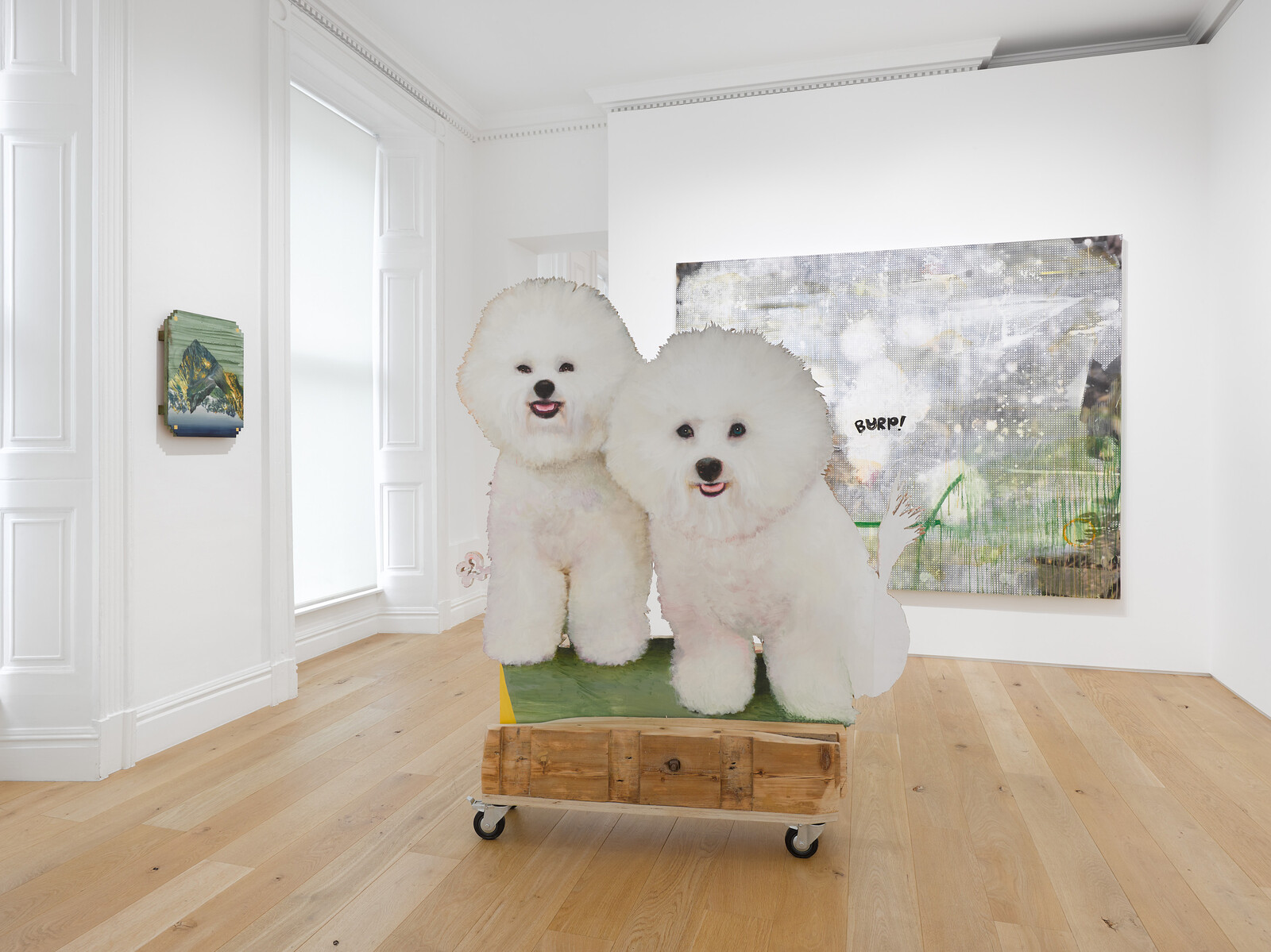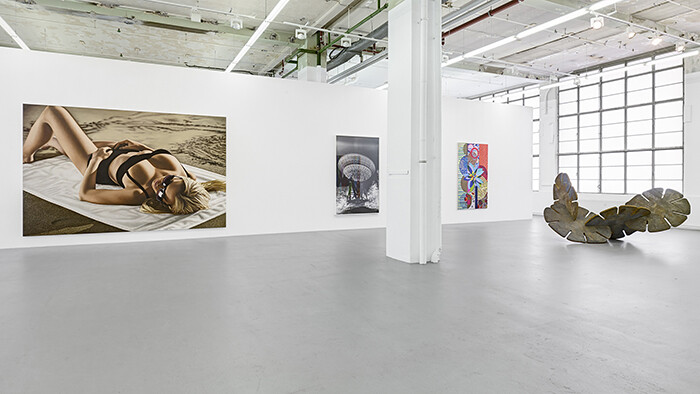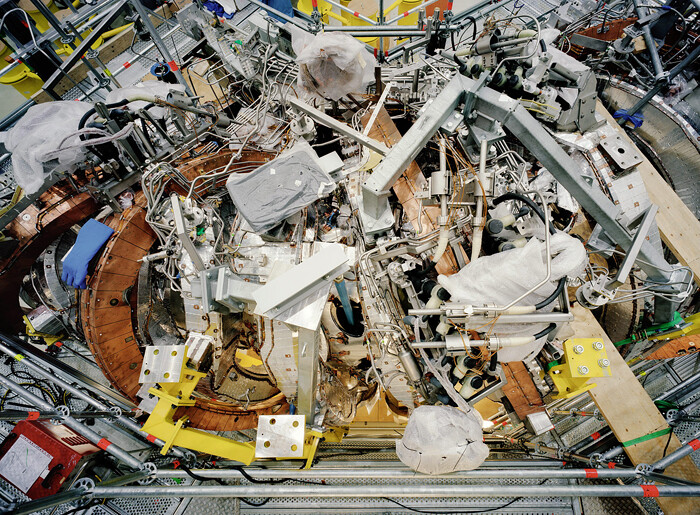Categories
Subjects
Authors
Artists
Venues
Locations
Calendar
Filter
Done
July 8, 2021 – Review
Tursic & Mille’s “Strange Days”
Kevin Brazil

Tursic & Mille’s Blue Monday (January) (all works 2021), an oil painting on a wood panel, depicts a young woman in a gingham dress sitting at a table. She is staring with confused disgust at her fingers, covered in the blue paint that lies, in a viscous blob, on the surface in front of her. Or rather, on the surface of the wood panel. Or rather: both on the table and on the panel at the same time, for the blue is so thickly applied that, disrupting the illusion, it reminds us that a painting is always matter and representation at once. Like this girl, Tursic & Mille are transfixed by this fundamental fact about painting: a fact and a fixation, which seems to unsettle as much as it captivates.
Each painting in “Strange Days,” Tursic & Mille’s first UK solo show, has a month of the year as a subtitle. These works, along with two sculptures of painted dogs, were all painted in 2021, yet the calendar they constitute serves as a summary of the concerns that the Serbian artist Ida Tursic and the French Wilfried Mille have explored since beginning to work together in the early 2000s. They start …
December 4, 2013 – Review
"REMEMBER EVERYTHING: 40 Years Galerie Max Hetzler"
Kito Nedo

If someone ever wished to consider the effects of German reunification on the commercial art scene after 1990, Galerie Max Hetzler would make a perfect case study. Hetzler, who had already opened his first gallery in 1973 in Stuttgart, played a central role as an art dealer in Cologne during the 1980s before relocating his business east to Berlin, the new “old” capital, in 1994. During his decade in Cologne—at that time arguably the most important city for contemporary art in West Germany—Hetzler introduced the work of Jeff Koons to the German public, and the gallerist’s name became synonymous with the predominantly male artist-crowd orbiting around Martin Kippenberger and Albert Oehlen (“the Hetzler Boys”). Despite Hetzler’s relocations and the reshuffling of his program over the years, his business has endured. True to its origins, today Hetzler remains a gallery constantly on the move—a venerable standby where, over the years, the art of constant change has been quietly perfected. Case in point: this fall the gallery inaugurated not one but two spaces in the old and traditionally bourgeois western Berlin neighborhood of Charlottenburg, and next spring will see the opening of a new Hetzler satellite in Paris’s Marais district.
With a treasure …
November 11, 2010 – Review
Thomas Struth at Galerie Max Hetzler, Berlin
Michèle Faguet

Like the images of empty streets of his hometown Düsseldorf, and the cities he visited and photographed as a young artist in the late 70s and early 80s—New York, Rome, Paris, Brussels—Thomas Struth’s recent group of photographs depict the landscapes of technological infrastructures in which the makers of these structures (i.e., human beings) are largely absent. With some of his largest works to date, this exhibition included fifteen exquisitely rendered documents from the artist’s travels to places like Geoje Island in South Korea or Cape Canaveral, Florida, as he visited research centers, laboratories, and construction sites dedicated to the development of new technologies but largely invisible to the collective imaginary.
Tangles of brightly colored cables and tubes, i.e., the innards of machines, have been shot from a proximity that inhibits a central perspective, making it impossible for any layperson to identify what they are seeing (or comprehend even after reading about them on the Internet) in works like Stellarator Wendelstein 7-X, Detail, Max Planck IPP, Greifswald or Tokamak Asdex Upgrade Periphery, Max Planck IPP, Garching (both 2009). The result is an experience of visual and conceptual vertigo, seductive in its dizzying capacity to make the viewer feel small and insignificant—an operation …